‘Bean’s Quest’ Review
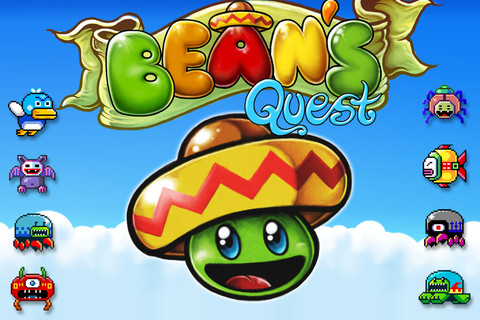
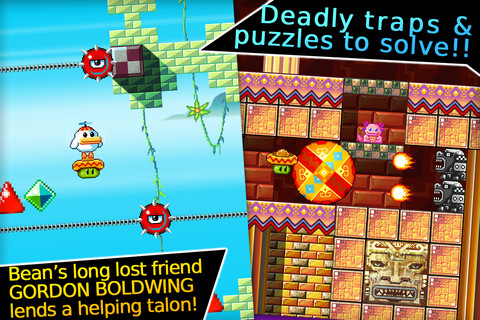
Graphics/Music: 4.5/5
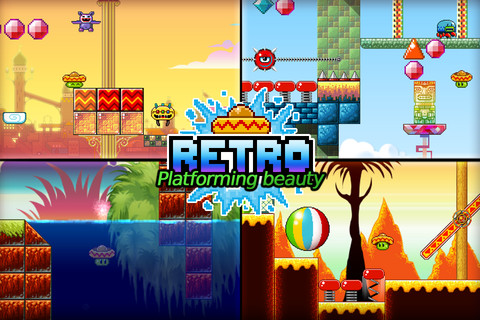
Bean’s Quest (is currently on sale from $2.99 to $0.99 in celebration of its most recent, content doubling update)
Number of Results: 31


Graphics/Music: 4.5/5

Bean’s Quest (is currently on sale from $2.99 to $0.99 in celebration of its most recent, content doubling update)
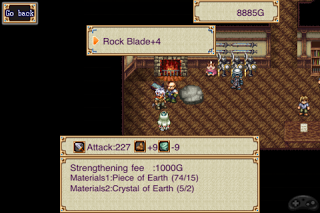
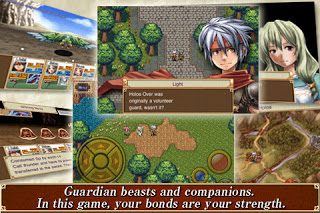
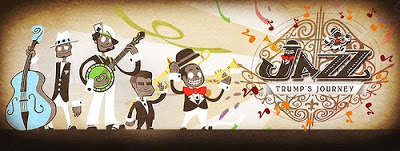 Recently, Bulkypix has been on a hot-streak. Their newer publications of Save the Furries, Funny Hell, Another World, Mamba Nation Battle, Terra Noctis, and more, have thrown them right back into the hot seat, letting iOS gamers know that they know exactly what a top-notch, high-quality title is. Carrying on this streak of awesome releases, Jazz: Trump’s Journey, a co-production between Egg Ball and Bulkypix, just went live this week, and it does not disappoint.
Recently, Bulkypix has been on a hot-streak. Their newer publications of Save the Furries, Funny Hell, Another World, Mamba Nation Battle, Terra Noctis, and more, have thrown them right back into the hot seat, letting iOS gamers know that they know exactly what a top-notch, high-quality title is. Carrying on this streak of awesome releases, Jazz: Trump’s Journey, a co-production between Egg Ball and Bulkypix, just went live this week, and it does not disappoint.
 You’ll play as Trump, a famous jazz musician who takes you on a journey through his memories of how he managed to get known in the 1920’s New Orleans Jazz scene. And not only is the game influenced by the music of the time, but also by the art, with the environments, characters, buildings, and backgrounds all influenced by paintings from 1920’s New Orleans. Another influence for the game is the biography of Louis Armstrong, whom the main character, Trump, even slightly resembles. There’s several aspects within the game that directly match Armstrong’s life; being raised by his grandmother, spending time in a prison where the in-mates were able to play music, and of course, playing the trumpet. The music you’ll hear throughout the game was recorded by live studio musicians, and with each band member that you team-up with throughout your journey will add to the soundtrack. Cut-scenes, which play out like old silent films, are also found within the game, with the characters talking to one-another, and then being taken to a screen where you can read the dialogue. Sadly though, the dialogue is filled with grammatical and capitalization errors. I know that there are quite a few gamers who feel that imperfect grammar is something that takes away from the immersion of games, which is very understandable. It can get very frustrating having to stop and re-think what it is that you‘ve just read, or missing out on a dialogue section because you were trying to understand what a character was saying, which is a problem during the silent film influenced cut-scenes, because the dialogue screens don’t stay on the screen for long.
You’ll play as Trump, a famous jazz musician who takes you on a journey through his memories of how he managed to get known in the 1920’s New Orleans Jazz scene. And not only is the game influenced by the music of the time, but also by the art, with the environments, characters, buildings, and backgrounds all influenced by paintings from 1920’s New Orleans. Another influence for the game is the biography of Louis Armstrong, whom the main character, Trump, even slightly resembles. There’s several aspects within the game that directly match Armstrong’s life; being raised by his grandmother, spending time in a prison where the in-mates were able to play music, and of course, playing the trumpet. The music you’ll hear throughout the game was recorded by live studio musicians, and with each band member that you team-up with throughout your journey will add to the soundtrack. Cut-scenes, which play out like old silent films, are also found within the game, with the characters talking to one-another, and then being taken to a screen where you can read the dialogue. Sadly though, the dialogue is filled with grammatical and capitalization errors. I know that there are quite a few gamers who feel that imperfect grammar is something that takes away from the immersion of games, which is very understandable. It can get very frustrating having to stop and re-think what it is that you‘ve just read, or missing out on a dialogue section because you were trying to understand what a character was saying, which is a problem during the silent film influenced cut-scenes, because the dialogue screens don’t stay on the screen for long. 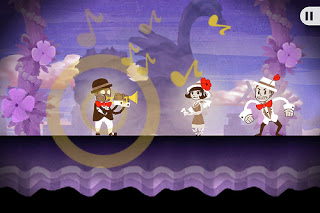 As far as the controls are concerned, you’re given your typical platformer layout; left and right movement buttons in the bottom left corner, and a jump button in the bottom right. The left/right buttons are spaced pretty far apart, it would have been great if there was an option for gamers to set all the buttons wherever they wanted them, especially for playing on the iPad, which, right now, I can only assume would be fairly difficult with the spacing as it is now. There are other buttons that come into play as you progress through the game, and come across different environment pieces. When you get onto a ladder, or a rope, up and down movement buttons will appear above the left and right buttons, along the left side of the screen. There’s also a button for playing your trumpet once you find it, and doing so stops time for all objects with a musical icon outlined in green on them. There are other objects which are not effected by the time stops, and those have the same icon, only it’s outlined in red.
As far as the controls are concerned, you’re given your typical platformer layout; left and right movement buttons in the bottom left corner, and a jump button in the bottom right. The left/right buttons are spaced pretty far apart, it would have been great if there was an option for gamers to set all the buttons wherever they wanted them, especially for playing on the iPad, which, right now, I can only assume would be fairly difficult with the spacing as it is now. There are other buttons that come into play as you progress through the game, and come across different environment pieces. When you get onto a ladder, or a rope, up and down movement buttons will appear above the left and right buttons, along the left side of the screen. There’s also a button for playing your trumpet once you find it, and doing so stops time for all objects with a musical icon outlined in green on them. There are other objects which are not effected by the time stops, and those have the same icon, only it’s outlined in red.  Each of the levels has quite a few checkpoints, which you are able to backtrack to if you feel that you’ve missed something, or want to reset a puzzle. This can be done by pressing the icon in the top left corner. However, there are some checkpoints that do not register, and you could end up being sent back more than one checkpoint. It doesn’t happen often, and has never happened during spots where there was a sign in the background saying that you could go back to a checkpoint, but it does happen occasionally.
Each of the levels has quite a few checkpoints, which you are able to backtrack to if you feel that you’ve missed something, or want to reset a puzzle. This can be done by pressing the icon in the top left corner. However, there are some checkpoints that do not register, and you could end up being sent back more than one checkpoint. It doesn’t happen often, and has never happened during spots where there was a sign in the background saying that you could go back to a checkpoint, but it does happen occasionally.
![]() If you’re a regular reader of TheAppShack, you probably know by now that my favorite genre of video games is platformers. Especially exploratory platformers. As I’ve said a few times, Metroid II – Return of Samus is my favorite video game of ALL TIME. These days, my iPod is my main gaming console, and yes, I know how weird that is, and that I am in a very small group of people here, but anyway, I have been hoping that Metroidvania titles would become more frequent in the AppStore. Phoenix Spirit and Grokion seemed to be the only titles within this genre for quite some time, but over the last year or so, Metroidvania fans have grown, or, more likely, have gotten iDevices, and releases like Elemental Rage, Miss Claire Garden, Cordy, Glowfish, Emberwind, BlibBlob, Shantae, SpyCorp, and a few more have added loads of fuel to the fire. Granted, not all of these are TRUE Metroidvania titles, but they do incorporate quite a bit of exploration, and for die-hard fans of the genre, that’s usually enough. So now, when a platformer comes along that has “exploration” mentioned within 5 feet of it, I’m usually one of the first people to jump all over it.
If you’re a regular reader of TheAppShack, you probably know by now that my favorite genre of video games is platformers. Especially exploratory platformers. As I’ve said a few times, Metroid II – Return of Samus is my favorite video game of ALL TIME. These days, my iPod is my main gaming console, and yes, I know how weird that is, and that I am in a very small group of people here, but anyway, I have been hoping that Metroidvania titles would become more frequent in the AppStore. Phoenix Spirit and Grokion seemed to be the only titles within this genre for quite some time, but over the last year or so, Metroidvania fans have grown, or, more likely, have gotten iDevices, and releases like Elemental Rage, Miss Claire Garden, Cordy, Glowfish, Emberwind, BlibBlob, Shantae, SpyCorp, and a few more have added loads of fuel to the fire. Granted, not all of these are TRUE Metroidvania titles, but they do incorporate quite a bit of exploration, and for die-hard fans of the genre, that’s usually enough. So now, when a platformer comes along that has “exploration” mentioned within 5 feet of it, I’m usually one of the first people to jump all over it.
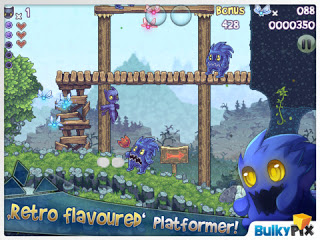 FireFruitForge has been working on a little game that’s going by the name Terra Noctis (originally named After Dark, if any readers out there heard of it a while back, but they decided to change the name so as not to run into any legal issues). It’s a retro inspired platformer, with influences from Super Mario Brothers, Donkey Kong, and has quite a bit of exploration thrown in as well. There are 3 difficulty levels, Normal, Hard, and Nightmare, with the harder difficulties having more enemies, more traps, and less platforms.
FireFruitForge has been working on a little game that’s going by the name Terra Noctis (originally named After Dark, if any readers out there heard of it a while back, but they decided to change the name so as not to run into any legal issues). It’s a retro inspired platformer, with influences from Super Mario Brothers, Donkey Kong, and has quite a bit of exploration thrown in as well. There are 3 difficulty levels, Normal, Hard, and Nightmare, with the harder difficulties having more enemies, more traps, and less platforms. 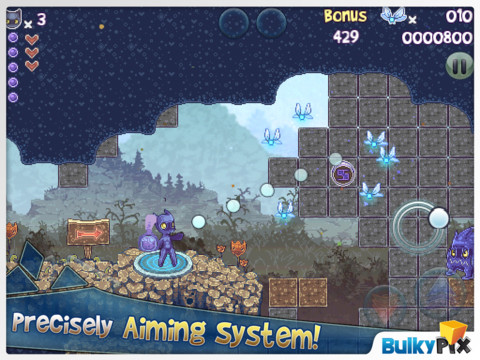 Now, once you start up the game, choose a difficulty, enter the first level, and start making your way to the end of the level, you’ll notice immediately that the level design is very well thought out. You’ll have quite a bit to look forward to as you make your way through the game, because it only gets better as you progress. The level design throughout the game is actually some of the best I’ve ever experienced. The amount of time and thought that must have gone into the design is apparent pretty much every step you make. Not to mention how much time must have gone into testing the levels to make sure jumps were just right, and everything got lined up perfectly.
Now, once you start up the game, choose a difficulty, enter the first level, and start making your way to the end of the level, you’ll notice immediately that the level design is very well thought out. You’ll have quite a bit to look forward to as you make your way through the game, because it only gets better as you progress. The level design throughout the game is actually some of the best I’ve ever experienced. The amount of time and thought that must have gone into the design is apparent pretty much every step you make. Not to mention how much time must have gone into testing the levels to make sure jumps were just right, and everything got lined up perfectly. 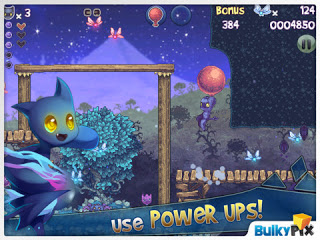 It’s clear, after playing the game, that Terra Noctis is very deserving of it’s $2.99 price-tag, if not more. Being Universal, including iCade support, the amount of content, especially for 100% completionist fanatics, and the OpenFeint leaderboards, 24 hard to snag achievements, as well as top scores for each level that are shown at the level select screen, should keep any gamer, even platformer fanatics, busy for quite some time. It’s easily one of the best platform games I’ve ever had the pleasure of playing, and the amount of work, time, effort, and testing that has gone into Terra Noctis, shines through with every single frame of the game. After being able to play this for the last two weeks, I can very confidently say that it is my #3 favorite game of 2011, right under Space Tripper and Anomaly Warzone Earth. With Normal difficulty very reminiscent of the difficulty in old-school Mario games, Terra Noctis is great for all gamers, and is HIGHLY recommended. FireFruitForge has given iOS gamers a phenomenal piece of art all wrapped up in a tightly controlled, highly enjoyable, modern/old-school mesh of a video game. Everyone with an iDevice should grab it as soon as possible
It’s clear, after playing the game, that Terra Noctis is very deserving of it’s $2.99 price-tag, if not more. Being Universal, including iCade support, the amount of content, especially for 100% completionist fanatics, and the OpenFeint leaderboards, 24 hard to snag achievements, as well as top scores for each level that are shown at the level select screen, should keep any gamer, even platformer fanatics, busy for quite some time. It’s easily one of the best platform games I’ve ever had the pleasure of playing, and the amount of work, time, effort, and testing that has gone into Terra Noctis, shines through with every single frame of the game. After being able to play this for the last two weeks, I can very confidently say that it is my #3 favorite game of 2011, right under Space Tripper and Anomaly Warzone Earth. With Normal difficulty very reminiscent of the difficulty in old-school Mario games, Terra Noctis is great for all gamers, and is HIGHLY recommended. FireFruitForge has given iOS gamers a phenomenal piece of art all wrapped up in a tightly controlled, highly enjoyable, modern/old-school mesh of a video game. Everyone with an iDevice should grab it as soon as possible
![]() Real time base defense games have generated quite a following in the iOS gaming world. Cartoon Wars was my, and probably a whole lot of other’s, first foray into this genre. Even though there’s not a whole lot of variety throughout the genre, they really seem to sell well, and are almost always fairly addicting. I recently was able to get my hands on Funny Hell, developed by Fazen and published by the ever popular Bulkypix.
Real time base defense games have generated quite a following in the iOS gaming world. Cartoon Wars was my, and probably a whole lot of other’s, first foray into this genre. Even though there’s not a whole lot of variety throughout the genre, they really seem to sell well, and are almost always fairly addicting. I recently was able to get my hands on Funny Hell, developed by Fazen and published by the ever popular Bulkypix.
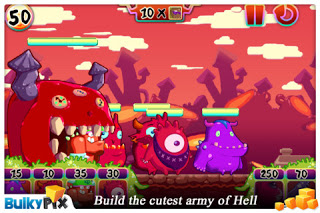 Like others in the genre, Funny Hell has you sending out various characters to battle the enemy. However, in Funny Hell, you’re given a mission or two at the beginning of each stage, which does set it slightly apart from other titles. The first 10 of 50 levels, that are split up across 5 different worlds, each leading you closer to the center of ’hell’, and each having an available 3 ‘skull‘ ranking, are set up like tutorial levels, adding another character to the line-up, and getting you acquainted with the enemies, and gameplay in general. Most of these levels are completed when you send out a certain number of characters, or kill a certain amount of enemies. After this, the gameplay picks up fairly quickly, with the first real stage’s mission having you survive for 3 minutes and 30 seconds, which, believe it or not, can prove to be quite the challenge, not often, but sometimes to a frustrating extent. There are more of these mission type levels as you progress throughout the game, having you save up a certain amount of coinage, or kill a certain amount of one type of enemy. It does add some extra strategy behind the already fairly strategic gameplay. Each of your characters has a certain ability, generally either shooting a projectile, or having a strong attack. There are some which both fire projectiles and melee attack, but cost more as well. You will need to go through some trial and error figuring out which enemies require which units to be sent out to ensure the most possible damage is done, but once you figure it out, deciding when on the battle field they should come into contact with each other also becomes part of the strategy. You’re able to build an offensive attacking stone type character on the side of your base, which tosses projectiles out, but only within a certain range. If you’re having trouble with some enemies, sometimes waiting for them to make it down towards your base so that you can also attack with that stone character is the best course of action. It makes for some challenging, and entertaining gameplay.
Like others in the genre, Funny Hell has you sending out various characters to battle the enemy. However, in Funny Hell, you’re given a mission or two at the beginning of each stage, which does set it slightly apart from other titles. The first 10 of 50 levels, that are split up across 5 different worlds, each leading you closer to the center of ’hell’, and each having an available 3 ‘skull‘ ranking, are set up like tutorial levels, adding another character to the line-up, and getting you acquainted with the enemies, and gameplay in general. Most of these levels are completed when you send out a certain number of characters, or kill a certain amount of enemies. After this, the gameplay picks up fairly quickly, with the first real stage’s mission having you survive for 3 minutes and 30 seconds, which, believe it or not, can prove to be quite the challenge, not often, but sometimes to a frustrating extent. There are more of these mission type levels as you progress throughout the game, having you save up a certain amount of coinage, or kill a certain amount of one type of enemy. It does add some extra strategy behind the already fairly strategic gameplay. Each of your characters has a certain ability, generally either shooting a projectile, or having a strong attack. There are some which both fire projectiles and melee attack, but cost more as well. You will need to go through some trial and error figuring out which enemies require which units to be sent out to ensure the most possible damage is done, but once you figure it out, deciding when on the battle field they should come into contact with each other also becomes part of the strategy. You’re able to build an offensive attacking stone type character on the side of your base, which tosses projectiles out, but only within a certain range. If you’re having trouble with some enemies, sometimes waiting for them to make it down towards your base so that you can also attack with that stone character is the best course of action. It makes for some challenging, and entertaining gameplay.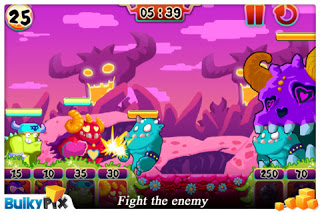 Funny Hell is definitely a release that deserves it’s $2.99 price tag, and then some. Being universal, and coupled with incredible replay value, emphasized by the addition of GameCenter leaderboards for Coins, Killed Monsters, and Skulls, along with an incredible 60 achievements to try and unlock. There’s quite a bit of challenge here, especially if you go ahead and try and grab 3 skull rankings on each stage. Having missions for each of the stages does bring some originality to the game, which is great to see within the base defense genre. It looks like December is a great month for Bulkypix publications. Fazen has created an extremely polished, and well produced title, and I can’t wait to see what they bring iOS gamers in the future!
Funny Hell is definitely a release that deserves it’s $2.99 price tag, and then some. Being universal, and coupled with incredible replay value, emphasized by the addition of GameCenter leaderboards for Coins, Killed Monsters, and Skulls, along with an incredible 60 achievements to try and unlock. There’s quite a bit of challenge here, especially if you go ahead and try and grab 3 skull rankings on each stage. Having missions for each of the stages does bring some originality to the game, which is great to see within the base defense genre. It looks like December is a great month for Bulkypix publications. Fazen has created an extremely polished, and well produced title, and I can’t wait to see what they bring iOS gamers in the future!
![]() 10tons Ltd. is definitely not new to the AppStore. Their first iOS release, Rope Raider, showing up in the AppStore on November 4, 2009, was, even then, a prime example of what 10tons could do with the platform. Since then, 15 more releases have followed, each time, gaining more of a following, though it’s fairly safe to say that Sparkle the Game has been their most successful endeavor, it’s very clear that they know exactly what it takes to create a top notch game, appealing to both casual and hardcore gamers. Their latest release, Swingworm, is yet again, another prime example of that.
10tons Ltd. is definitely not new to the AppStore. Their first iOS release, Rope Raider, showing up in the AppStore on November 4, 2009, was, even then, a prime example of what 10tons could do with the platform. Since then, 15 more releases have followed, each time, gaining more of a following, though it’s fairly safe to say that Sparkle the Game has been their most successful endeavor, it’s very clear that they know exactly what it takes to create a top notch game, appealing to both casual and hardcore gamers. Their latest release, Swingworm, is yet again, another prime example of that.
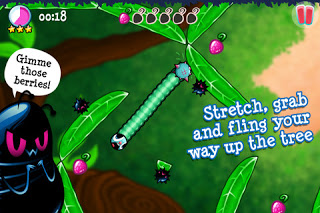 In the game, you’ll guide a worm named Swingy through an amazing 95 levels by grabbing either the front or back end of the worm, and swinging it from platform to platform, collecting the Rubbaberries that are scattered throughout the stages. Once you’ve collected all of the berries in a level, an elevator will activate, and take you to the next level. But it’s not as easy as it sounds. In order to reach most areas, you’ll need to figure out how to use the momentum of the worm while swinging so that either his head or end will attach to the leaves, which are pretty spread out, and it can sometimes pose a small challenge getting from one to the next. Each of the levels has a possible 3 star ranking, adding quite a bit of replay value to the game. To get a perfect 3 stars, you will need to complete the levels as fast as you can. There is a time limit bar shown in the top left corner, each time it fills up, a star is removed from your ranking. Once you complete the level, you’re shown the total time it took you to complete the level, and what time you’ll need to get the next best star ranking, which is very nice. I really wish all star ranking based on time games did this.
In the game, you’ll guide a worm named Swingy through an amazing 95 levels by grabbing either the front or back end of the worm, and swinging it from platform to platform, collecting the Rubbaberries that are scattered throughout the stages. Once you’ve collected all of the berries in a level, an elevator will activate, and take you to the next level. But it’s not as easy as it sounds. In order to reach most areas, you’ll need to figure out how to use the momentum of the worm while swinging so that either his head or end will attach to the leaves, which are pretty spread out, and it can sometimes pose a small challenge getting from one to the next. Each of the levels has a possible 3 star ranking, adding quite a bit of replay value to the game. To get a perfect 3 stars, you will need to complete the levels as fast as you can. There is a time limit bar shown in the top left corner, each time it fills up, a star is removed from your ranking. Once you complete the level, you’re shown the total time it took you to complete the level, and what time you’ll need to get the next best star ranking, which is very nice. I really wish all star ranking based on time games did this. 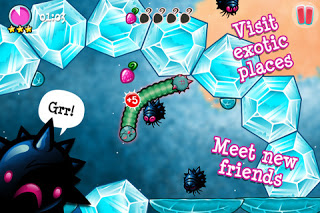 With GameCenter leaderboards for total Episode times on each of the 6 Episodes, and 14 achievements, the replayabilty is extremely high, and the drive to better your time is constantly looking you in the face. It’s arguable that Swingworm is 10tons best release since Sparkle the Game, bringing all of their knowledge of what it takes to make a top notch mix of casual and hardcore gameplay fit perfectly into an action puzzler. $2.99 is a great price for this Universal build, especially with the insane replay value, and incredible amount of content. Swingworm ends up being a game that’s extremely easy to recommend for gamers of all ages.
With GameCenter leaderboards for total Episode times on each of the 6 Episodes, and 14 achievements, the replayabilty is extremely high, and the drive to better your time is constantly looking you in the face. It’s arguable that Swingworm is 10tons best release since Sparkle the Game, bringing all of their knowledge of what it takes to make a top notch mix of casual and hardcore gameplay fit perfectly into an action puzzler. $2.99 is a great price for this Universal build, especially with the insane replay value, and incredible amount of content. Swingworm ends up being a game that’s extremely easy to recommend for gamers of all ages.
![]() Strategy gaming is a genre I’m fairly new to. Not to say that I’m not fully immersed in it. Over the last 3 months, I’ve buried my head into quite a few RTS and Turn-Based Strategy titles. More often than not though, I felt as if they didn’t offer enough depth. There has always been the desire to have more control over an aspect of the game, or wishing that the story was deeper, the history of the characters revealed a bit more, and so on. Enter Ravenmark: Scourge of Estellion, developed by Witching Hour Studios.
Strategy gaming is a genre I’m fairly new to. Not to say that I’m not fully immersed in it. Over the last 3 months, I’ve buried my head into quite a few RTS and Turn-Based Strategy titles. More often than not though, I felt as if they didn’t offer enough depth. There has always been the desire to have more control over an aspect of the game, or wishing that the story was deeper, the history of the characters revealed a bit more, and so on. Enter Ravenmark: Scourge of Estellion, developed by Witching Hour Studios.
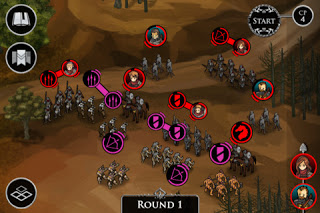 At it’s core, Ravenmark is a very well fleshed out turn-based strategy game based on rock-paper-scissors mechanics. Each of the 4 different groups of fighters has a group that they‘re strong and another that they‘re weak against. But it’s everything that’s added on top of the core gameplay that makes Ravenmark a strategy game that stands out amongst the crowd.
At it’s core, Ravenmark is a very well fleshed out turn-based strategy game based on rock-paper-scissors mechanics. Each of the 4 different groups of fighters has a group that they‘re strong and another that they‘re weak against. But it’s everything that’s added on top of the core gameplay that makes Ravenmark a strategy game that stands out amongst the crowd. 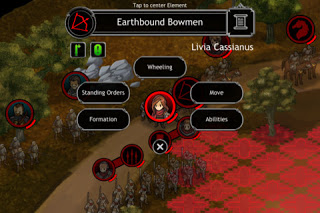 The graphics are extremely well done, with some of the best UI controls I’ve had the pleasure of having in a strategy game. The music, sounds, animations, everything within the game that’s surrounding the core gameplay and story is top-notch, and very easy to use, understand, navigate, and all comes together to form one of the best turn-based strategy games I’ve ever played. $2.99 is an amazing price for what the game has to offer, and is highly recommended for any and all fans of the genre, as well as newcomers. The tutorials are done very well, and you learn everything gradually, with the game essentially showing you exactly how to do each action, there’s not a whole lot of reading if that’s a turn off. Ravenmark is another game that shows that the iOS is capable of handling a hardcore title with plenty of substance and depth, and a game that gives iOS gamers wishing for more serious games to hit the AppStore another title to add to their list of definitive iOS games, as well as gives more hope for the future of iOS gaming.
The graphics are extremely well done, with some of the best UI controls I’ve had the pleasure of having in a strategy game. The music, sounds, animations, everything within the game that’s surrounding the core gameplay and story is top-notch, and very easy to use, understand, navigate, and all comes together to form one of the best turn-based strategy games I’ve ever played. $2.99 is an amazing price for what the game has to offer, and is highly recommended for any and all fans of the genre, as well as newcomers. The tutorials are done very well, and you learn everything gradually, with the game essentially showing you exactly how to do each action, there’s not a whole lot of reading if that’s a turn off. Ravenmark is another game that shows that the iOS is capable of handling a hardcore title with plenty of substance and depth, and a game that gives iOS gamers wishing for more serious games to hit the AppStore another title to add to their list of definitive iOS games, as well as gives more hope for the future of iOS gaming.
![]() 3D Motion Picture Puzzler. Chances are you haven’t heard of the genre. Don’t feel bad, it’s relatively untouched within the AppStore, and aside from Flash games, finding a Motion Picture Puzzle game can be quite the task. On the iOS, Pictorial is available for free, and has been a very good example of a 3D Motion Picture Puzzler. What you might not know is that Pictorial is an unofficial iOS port of the Flash game, Starlight. The developers of Starlight are from FDG Entertainment (Blosics, Cover Orange, Beyond Ynth, Bobby Carrot, and more), who are also the developers of a wonderful new motion picture puzzler game; Blueprint 3D.
3D Motion Picture Puzzler. Chances are you haven’t heard of the genre. Don’t feel bad, it’s relatively untouched within the AppStore, and aside from Flash games, finding a Motion Picture Puzzle game can be quite the task. On the iOS, Pictorial is available for free, and has been a very good example of a 3D Motion Picture Puzzler. What you might not know is that Pictorial is an unofficial iOS port of the Flash game, Starlight. The developers of Starlight are from FDG Entertainment (Blosics, Cover Orange, Beyond Ynth, Bobby Carrot, and more), who are also the developers of a wonderful new motion picture puzzler game; Blueprint 3D.
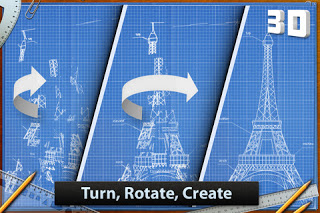 You’ll be given 240 different pictures to try and solve. When the picture first pops up, it looks like a bunch of broken lines, shapes, and really, just a jumbled mess. You’ll need to rotate the picture by dragging your finger across the screen until you see something that’s starting to resemble an actual object. Once you get the picture, you’ll need to use two fingers to rotate the image so that it’s right-side-up, and then move on to the next picture.
You’ll be given 240 different pictures to try and solve. When the picture first pops up, it looks like a bunch of broken lines, shapes, and really, just a jumbled mess. You’ll need to rotate the picture by dragging your finger across the screen until you see something that’s starting to resemble an actual object. Once you get the picture, you’ll need to use two fingers to rotate the image so that it’s right-side-up, and then move on to the next picture.  Like EPOCH, and couple other recent releases in the AppStore, Blueprint will not take long at all to complete, but what gameplay is there is done extremely well, and is loads of fun. I’m not too sure how many of you out there are hoping for more games that are short and sweet, but done so well that every second you spend playing them is just about, if not more, fun than going through 40 hours of an RPG, but we’d love to see more of them hit the AppStore. At the low price of $0.99 for the iPhone version, and $2.99 for the HD build, with all the leader boards, achievements, and new level packs that are on the way, it’s a great price for what you’re getting. Sure, there are more polished games, games that have more content, or more action packed into them, but if you’re looking for something that hasn’t been reproduced a hundred times, and carries with it loads of entertainment, Blueprint 3D will be a great game to check out. You can also check out Pictorial for free, and Pictorial HD has just gone free for a limited time if you’d like to check out what sort of gameplay you’ll be getting yourselves into.
Like EPOCH, and couple other recent releases in the AppStore, Blueprint will not take long at all to complete, but what gameplay is there is done extremely well, and is loads of fun. I’m not too sure how many of you out there are hoping for more games that are short and sweet, but done so well that every second you spend playing them is just about, if not more, fun than going through 40 hours of an RPG, but we’d love to see more of them hit the AppStore. At the low price of $0.99 for the iPhone version, and $2.99 for the HD build, with all the leader boards, achievements, and new level packs that are on the way, it’s a great price for what you’re getting. Sure, there are more polished games, games that have more content, or more action packed into them, but if you’re looking for something that hasn’t been reproduced a hundred times, and carries with it loads of entertainment, Blueprint 3D will be a great game to check out. You can also check out Pictorial for free, and Pictorial HD has just gone free for a limited time if you’d like to check out what sort of gameplay you’ll be getting yourselves into.
![]() Science Fiction Real Time Strategy. A genre pretty much left untapped within the AppStore, there’s only a few titles that cover the 4X gameplay, but the ones that do are premium priced for a reason; extremely deep, intuitive user interface, hours upon hours of gameplay, endless replayabilty with almost endless results, and very strategic gameplay just to mention some biggies. Luckily for fans of the genre, Orator Games has just released Blue Libra. Not exactly a 4X game, but a mix between 4X and Galcon type gameplay gives hardcore fans of the genre something for quick plays, with more strategy and depth than any Galcon game, and new-comers to the genre something to help them get acquainted with the style. And at $0.99 ($2.99 for the HD/iPad Version), there’s pretty much no reason not to check it out.
Science Fiction Real Time Strategy. A genre pretty much left untapped within the AppStore, there’s only a few titles that cover the 4X gameplay, but the ones that do are premium priced for a reason; extremely deep, intuitive user interface, hours upon hours of gameplay, endless replayabilty with almost endless results, and very strategic gameplay just to mention some biggies. Luckily for fans of the genre, Orator Games has just released Blue Libra. Not exactly a 4X game, but a mix between 4X and Galcon type gameplay gives hardcore fans of the genre something for quick plays, with more strategy and depth than any Galcon game, and new-comers to the genre something to help them get acquainted with the style. And at $0.99 ($2.99 for the HD/iPad Version), there’s pretty much no reason not to check it out.
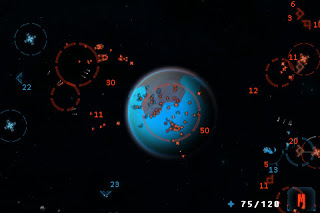 You’ll command the last of the Libra class of carriers to avenge the fall of your home world. Your main goal? Make your way across the galaxy back to your home world, destroying anyone who stands in your way. You’ll need to produce different types of ships, and take over planets and space stations, getting rid of the opposing force in each sector, upgrading your ships and main Libra carrier with multiple upgrades available in the shop, so that you can be sure to have the power and ability to take on anything that might be thrown your way. One wrong move, and you could wind up with a loss.
You’ll command the last of the Libra class of carriers to avenge the fall of your home world. Your main goal? Make your way across the galaxy back to your home world, destroying anyone who stands in your way. You’ll need to produce different types of ships, and take over planets and space stations, getting rid of the opposing force in each sector, upgrading your ships and main Libra carrier with multiple upgrades available in the shop, so that you can be sure to have the power and ability to take on anything that might be thrown your way. One wrong move, and you could wind up with a loss. 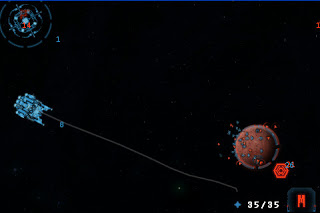 Again, at $0.99, there’s very little reason not to grab it, whether you’re a hardcore 4X RTS fan, or even if you’ve never played a Sci-Fi RTS before, it stretches across a wide length of skill levels, and provides simple yet still depthy gameplay. It’s definitely a title worth checking out, and one that you can easily sink hours upon hours into.
Again, at $0.99, there’s very little reason not to grab it, whether you’re a hardcore 4X RTS fan, or even if you’ve never played a Sci-Fi RTS before, it stretches across a wide length of skill levels, and provides simple yet still depthy gameplay. It’s definitely a title worth checking out, and one that you can easily sink hours upon hours into.
![]() Exploritory Metroidvania-type games are a pretty big rarity in the AppStore, but those that can be found are extremely well made. Glowfish, by MumboJumbo (Luxor, 7 Wonders), is no exception to this. You’ll guide Glowfish through 50+ levels, finding all the little glowing fish you can use as your shield, defeating interesting enemies, exploring the depths for hidden areas, collecting coins, and gaining friends that you can take along with you, lending their abilities.
Exploritory Metroidvania-type games are a pretty big rarity in the AppStore, but those that can be found are extremely well made. Glowfish, by MumboJumbo (Luxor, 7 Wonders), is no exception to this. You’ll guide Glowfish through 50+ levels, finding all the little glowing fish you can use as your shield, defeating interesting enemies, exploring the depths for hidden areas, collecting coins, and gaining friends that you can take along with you, lending their abilities.
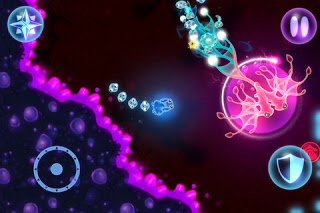 You’ll control your Glowfish with a virtual joystick, a shield button, which either brings the fish you’ve collected into a shield circle around you, or lets them trail behind you, letting you access areas joined by a small pathway, along with tapping on the screen to dash in the direction you are facing.
You’ll control your Glowfish with a virtual joystick, a shield button, which either brings the fish you’ve collected into a shield circle around you, or lets them trail behind you, letting you access areas joined by a small pathway, along with tapping on the screen to dash in the direction you are facing. Glowfish is $2.99 for the iPhone, and $4.99 for the iPad, and worth every single penny, and then some. It is supported by GameCenter with a highscore leader board and 25 achievements, which, combined with the 4 star ratings available on each level, adds to the replay value a bit, though you probably won’t play through Glowfish more than one time in a row, it is a game that will call you back after a month or two. It certainly is a game that everyone who owns an iDevice should check out, and will easily end up on quite a few top games of 2011 lists.
Glowfish is $2.99 for the iPhone, and $4.99 for the iPad, and worth every single penny, and then some. It is supported by GameCenter with a highscore leader board and 25 achievements, which, combined with the 4 star ratings available on each level, adds to the replay value a bit, though you probably won’t play through Glowfish more than one time in a row, it is a game that will call you back after a month or two. It certainly is a game that everyone who owns an iDevice should check out, and will easily end up on quite a few top games of 2011 lists.